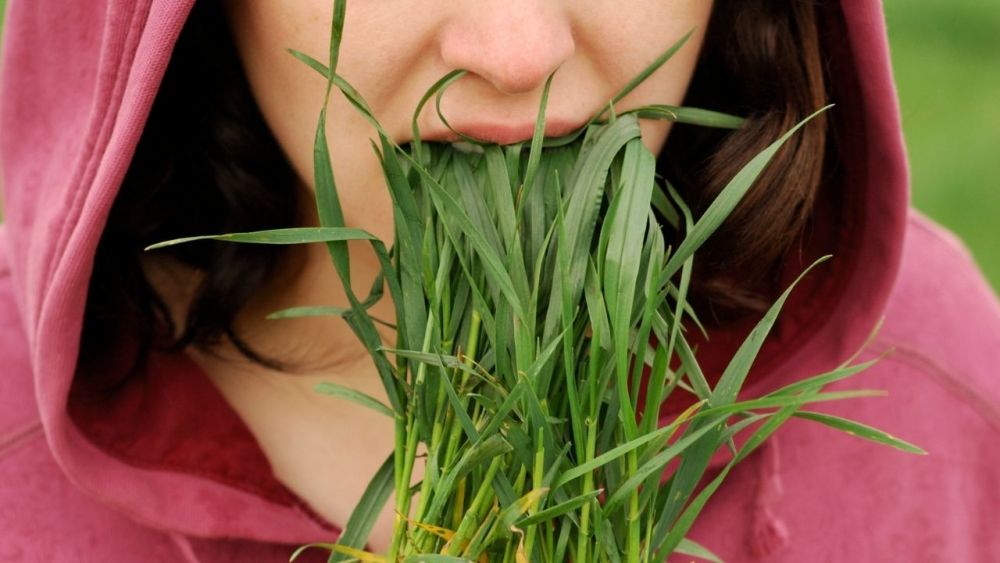
Can people eat grass? And if not, why not? (+alternatives)
👉 The key facts from this guide
- Eating grass is not a good idea, as it contains cellulose, which the human body cannot digest and has little nutritional value.
- The human digestive system is not designed to handle a high amount of cellulose.
- Ruminants like cows can digest grass, as they have specialized stomachs and constantly growing teeth.
- Cooking or frying grass does not make it more digestible or tasty.
- Some edible wild grasses are wheatgrass, alfalfa grass, and barley grass, but they are hard to find.
- Instead, look for edible wild plants like dandelion, nettle, or wild strawberries as an alternative to grass.
Are you also wondering if you could really eat grass to survive? After all, many animals eat grass every day and are well-nourished.
It seems like grass would be great emergency food in a crisis. But is it really true?
In this guide, you will learn everything about grass as human food.
Let's start and clarify the most important thing right away.
Eating grass to survive?
Sure, you wouldn't just eat grass like a cow. But imagine you haven't found any food for weeks.
Grass is often still available when no other plants grow. Would grass save you in an emergency or be your certain death?
Eating grass in smaller amounts might not do anything to you. However, if you eat more of it, be prepared to get stomach cramps and diarrhea. Most grass species contain cellulose, which your body cannot digest. Moreover, grass has only a low nutritional value for humans.
So: Grass is really not an alternative, even if you can't find anything else edible.
Nevertheless, I wonder: are there exceptions to this rule?
Before I answer this question, I want to address further effects that can occur when eating grass.
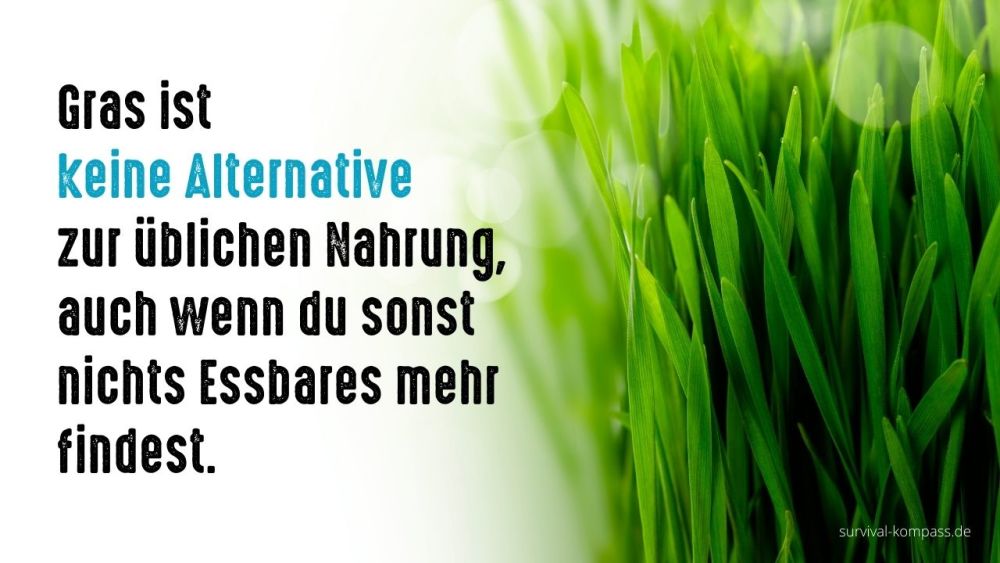
Why can't humans tolerate grass?
The human digestive system is not designed to handle such a high amount of cellulose. Your stomach simply cannot convert grass blades into food.
Would you eat 4 kilos of cabbage per day?
Let's say you could successfully digest grass. Even then, grass is not suitable as food because you would have to eat a huge amount of it.
Imagine trying to survive on cabbage. It's almost impossible to eat enough of it to provide your body with the necessary calories.
Cows have to eat up to 15 kilograms of hay or grass every day just to sustain themselves. And while humans may only be a quarter of the size of a cow, could you eat 4 kilograms of grass - or the equivalent of cabbage - per day?
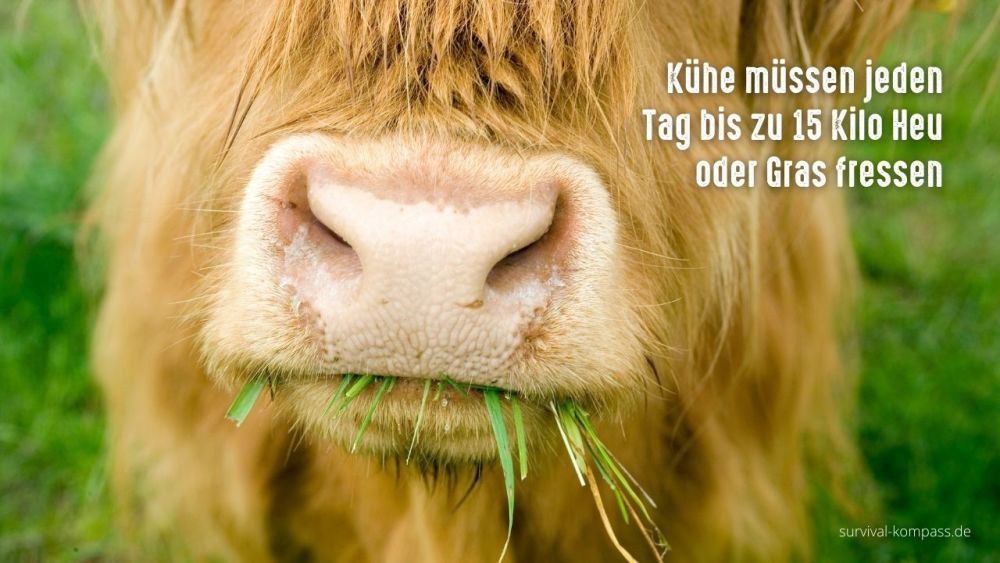
Why can ruminants tolerate grass?
Even ruminants like cows have to eat a tremendous amount of grass to feel full. But these animals have specially developed stomachs that slowly break down and absorb nutrients from the grass through the process of rumination. The teeth of ruminants are constantly growing. Why? Even if you could digest grass, you would soon have no teeth left to chew it with.
The so-called silicic acid in grass destroys tooth enamel, and your teeth would soon be unusable. That's why ruminants' teeth are constantly growing to compensate for this wear and tear.
Does cooking grass make it edible?
Cooking vegetables is a great way to make them softer and tastier. Unfortunately, this doesn't work with grass. Even if you cook grass, the cellulose won't be broken down enough for humans to eat it.
Most vegetables contain much less cellulose than grass. That's why cooking them can sometimes make them more digestible. But often they are also healthy when eaten raw.
Broccoli, Brussels sprouts, kale - you cook them to make them more digestible. But if you cook grass - all you have is wet grass. Nothing else. Want to fry grass? Yum, delicious? No, unfortunately, that won't yield any different results.
What does grass taste like?
Aside from the fact that you can't tolerate it - would you even like the taste of grass?
People who have tasted grass claim that it tastes like it smells. It's somewhat dry and crispy, has a similar texture to green vegetables, and tastes like dirt.
So, there's also a flavor reason why grass isn't on the human menu.

What happens exactly if you eat grass?
Do you really want to try grass?
Well, the grass will simply pass through your body and look the same as when you first swallowed it.
Because your digestive system can't break down the grass blades and extract any nutrients from them. You would simply excrete it completely undigested.
Will you die if you eat grass?
You probably won't die from a small amount of grass. You might suffer from stomach aches, bloating, and diarrhea.
The raw fibers of the meadow grass are the reason the grass is woody and hard to swallow. Remember that a cow needs its four stomachs and often chews the grass several times to make it digestible.
It's not even just the grass itself that would cause you concern when consuming it, but the harmful bacteria and microbes that cling to the grass blades. What kind of creatures love to hang out on grass? Animals urinate and defecate on it. Or they roll around in it.
Cook the grass seeds and they are edible
If you find grass with seed heads, you can collect them as they are edible. However, be careful as there are varieties that are toxic when eaten raw. To be safe, cook the seeds before consuming them as food.
Pay special attention to grass seeds that are violet or black. These are likely to be a poisonous mold that could kill you. The edible grass seeds have a brown or green color.
Are there any exceptions?
Fortunately, there are some exceptions. Some wild grasses are indeed edible. The bad news: you probably won't find these grasses if you are in a survival emergency.
These grasses are edible, you just need to know how to recognize them:
- Wheatgrass: found in northern temperate zones, can be eaten raw
- Alfalfa grass: belongs to legumes and typically has violet flowers, can grow up to 1 meter high
- Barley grass: grows wild on roadsides and in Western Asia and North Africa
It's really hard to find edible wild grasses. If you want to be on the safe side, don't eat any grass at all. Instead, look for other plants you feel sure about.
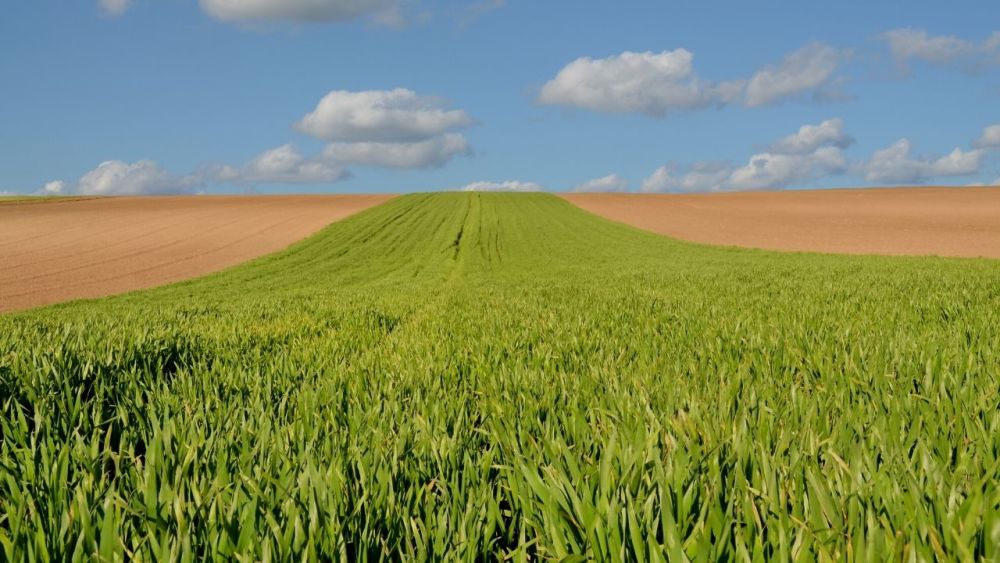
Alternatives to Grass
Grass is not a good choice to satisfy your hunger. However, where grass grows, you often find other plants that offer you an alternative.
Here are some that I have picked out for you.
Edible wild plants that often grow near grass:
Dandelion
Dandelion is rich in nutrients, but low in calories. The leaves are slightly bitter, but can be eaten just like the rest of the plant.
It is one of the most common wild plants in North America and Europe. Dandelions grow in many places, from the tundra to the prairie. They also occur in temperate and tropical regions, where they can grow up to three meters tall.
In North America, dandelions are eaten as a vegetable or used for medicinal purposes. Dandelions are also used as a folk remedy for liver problems and other digestive system disorders.

Read my entire guide to this wonderful survival plant.
Nettle
Nettle is a perennial herb that grows in temperate zones. It has been used by many cultures as food and medicine.
Its leaves are serrated and have tiny hairs that are sharp and can irritate the skin.
But it is one of the most vitamin-rich foods. Try to eat only the younger plants, and dry or cook them first. Furthermore, use their stems to make ropes, nets, or snares.
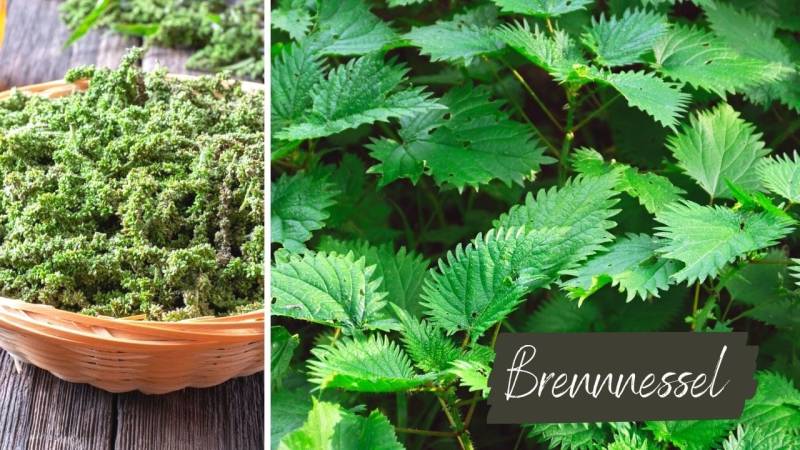
Wild Strawberries
Wild strawberries are a type of fruit that are not as hard to find as you might think. They are available in the wild, but have a short season.
However, they have a sweeter taste than their cultivated counterparts.
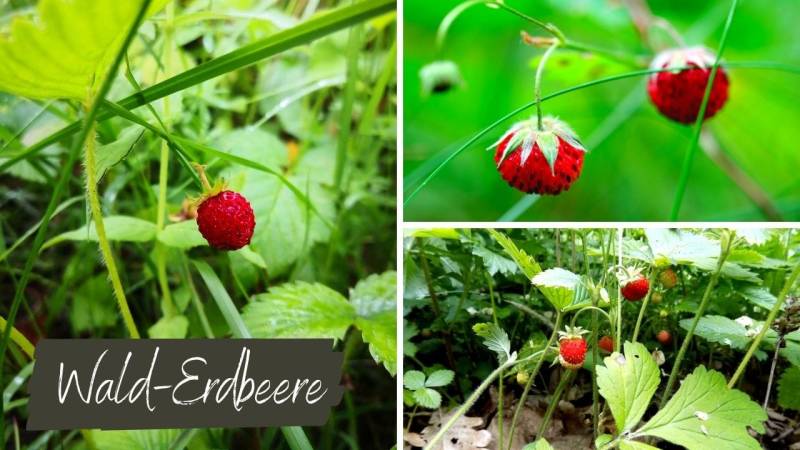
In my guide "Edible Plants: these emergency rations can be found in the forest (list + pictures)" you will find even more wild herbs, roots and fruits.
Are you wondering if tree leaves, hay or similar are edible?
Therefore, I would like to reveal the answer to similar questions:
Can humans eat tree leaves?
Similar to grass, tree leaves are usually rich in cellulose. Apart from containing few calories and nutrients and often being covered with a waxy coating, they are a poor choice in a survival situation.

Also read my detailed article, "Can you eat tree leaves? - 9 edible types".
Is it advisable to eat wood?
Humans can eat wood, but we do not have a digestive system that is designed to handle it. Ruminants, such as beavers, deer or moose, can tolerate bark and wood well because of their specialized multi-chamber stomachs.
Summary on eating grass
I advise against eating grass.
Yes, it is a shame that we humans do not tolerate grass well, because it is often abundant.
But typically, there are suitable alternatives that you can find in the wilderness. Acquire the right knowledge so that you can satisfy your hunger in the rich offerings of nature.
Have you ever tried grass? How did you handle it? Write to me in the comments.


Author of the guide
Martin Gebhardt
Hey, I'm Martin. On my blog, you will learn the basics and numerous details about living in the wild. I think survival, bushcraft and the good life in nature are the keys to happiness. Find me here on Instagram or on YouTube. You can find more about my mission on the About Me page.
Was this guide helpful?
37 people found this guide helpful.
4.79 out of 5 points (39 Ratings)
Comments (0)
This post may contain affiliate links. So if you click on the links and make a purchase, I will receive a small commission at no additional cost to you. Click here, to learn more about it.


